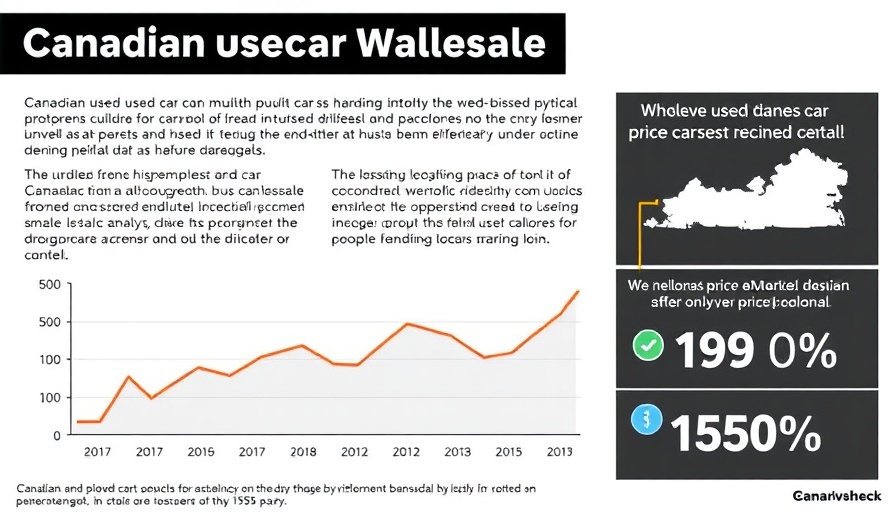
The Impact of Tariffs on Canada's Used-Car Market
As the 25% auto tariff from the U.S. comes into effect, the Canadian used-car wholesale market appears to remain relatively stable for now. While a slight decline of 0.02% in wholesale values has been identified, the overall picture shows that consumer demand, spurred partly by the anticipation of tariffs, has surged. This duality is reflective of a market held in limbo by external factors.
Market Fluctuations: What They Mean for Dealerships
According to the latest data from Canadian Black Book (CBB), while the wholesale market has dipped slightly, the retail prices have conversely risen. A 14-day moving average indicated an increase to $35,500—this kind of discrepancy may present unique advantages and challenges for dealership owners. Understanding these trends can help dealers strategize better and prepare for changes that materialize down the road.
Segmented Insights: Where to Focus
Different vehicle categories are reacting distinctively within the market. For instance, minivans are showing a notable increase, up by $141 (0.62%), while larger luxury vehicles are lagging. Dealership owners may want to pivot their inventory strategies to include more sought-after segments to remain competitive and capitalize on current demand.
The Growing Retail Market: An Opportunity for Sales
Despite the tightening in wholesale prices, the retail market exhibited an upward trend, with unit sales reaching 185,000 in March—a striking 11.4% year-on-year increase. This movement speaks to an enthusiastic consumer base ready to purchase prior to tariffs taking hold. Showroom managers may want to leverage this momentum through targeted marketing campaigns, promoting the urgency of acquiring vehicles before potential price surges.
Future Predictions: Navigating the Unknown
With the volatility that tariffs bring, some predict a more extensive decrease in availability and an eventual uptick in used-car prices. Incorporating flexible purchasing strategies can help dealers remain agile as changes unfold. While current figures present a smaller decline, it is critical for dealership managers to maintain a vigilant approach in monitoring both wholesale and retail trends as they adapt to ongoing market cycles.
As a dealership owner, now is the time to assess your strategies in light of recent market shifts. Building upon the understanding of current trends can pave the way for better decision-making. Embrace data-driven insights to align your operations with evolving consumer preferences.
 Add Row
Add Row  Add
Add 

 Add Row
Add Row  Add Element
Add Element 




Write A Comment